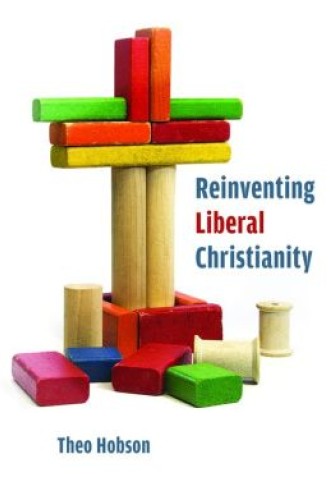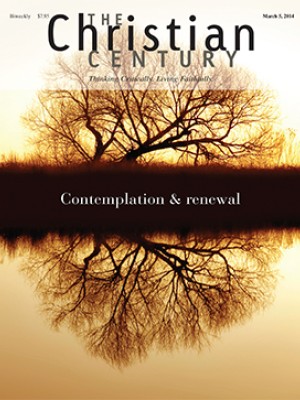Reinventing Liberal Christianity, by Theo Hobson
Theo Hobson, a British theologian and journalist now teaching at General Theological Seminary in New York, has written a sweeping, ambitious book tracing the historical emergence and fate of liberal theology in the modern period. In it he advocates for a specific understanding of that interpretive tradition. He reports: “I have been motivated by the conviction that the fashion toward antiliberalism is bad for Christian proclamation. There needs to be new clarity that the liberal state is a good thing.” The book thus becomes a defense of the “liberal state” and of the way in which good liberal Christianity is allied with it.
Hobson sets up his argument by noting that at the outset Christianity broke with the old order of Judaism and the Jewish law and thus “uniquely established freedom as the heart of moral idealism.” Liberal then comes to connote freedom from the old order that seeks to control, and the liberal state that champions freedom comes to be a natural and indispensable ally of liberal Christianity.
Read our latest issue or browse back issues.
Because the Roman church drifted toward centralized control, Hobson judges that the Reformation initiatives of Luther and Zwingli were precursors of modern secular liberalism. He then turns to England, where the liberal state began to emerge, first with the Elizabethan settlement, which moved toward toleration for dissent but without loosening the state monopoly. The subsequent contestation led to the English Civil War, which further challenged any form of absoluteness; the intrusion of Scottish Calvinists into the English controversy amounted to a harbinger of “the end of Christendom” and to qualification of its monologic system of control.
In this connection, for Hobson, John Milton emerges as a champion of the liberal state. Movement toward this new kind of tolerant state was slow and contested, but each step turned out to be of immense importance. Hobson pays careful attention to the shift from Milton to John Locke, which he calls “the triumph of universalism and the demise of particularity.” Milton’s thought echoes Luther’s: “Liberty is rooted in a particular narrative or myth: Christ brings freedom.” Locke, on the other hand, “retains a role for religion but moves the entire discourse away from narrative particularity.”
Hobson insists that such a liberal tradition must continue to stay close to sacramental practice. He gives great attention to the ways in which Luther and Zwingli struggled over continuity with or discontinuity from the Roman mass, while Elizabeth in her reform made herself “a focus for popular sacramental yearning.” Given Hobson’s accent on and appreciation for the importance of ritual, it almost seems that it is the performance of ritual, without reference to its substance, that matters, for Hobson has almost nothing to say about the substance of sacramental practice. This suggests a Durkheimian advocacy of civil religion. Hobson notes the “sacrophobia” of some forms of emancipation and insists that liberal Christianity must “recover its ritual code” because “Christianity never ceases to be a primitive religion.” But the book is strikingly thin on the theological dimension of liberal Christianity.
For Hobson, crucial components of the “good” tradition of liberal Christianity include an accent on freedom, an insistence on sacramental rootage, and an alliance with the liberal state. The “bad” tradition of liberal Christianity, by contrast, is a liberalism that has succumbed to Enlightenment rationality and thus scuttled the liturgical tradition that gives ballast to political claims. This trajectory has resulted in a skeptical humanism, whereas authentic faith must consist in “dialogical engagement with critical reason.”
Hobson offers a quick survey of the primary voices of Enlightenment rationality in the 18th century, considering it a legacy of Descartes via Locke and Voltaire that culminates in the skepticism of David Hume. Against that trajectory, Hobson sets with great appreciation the dialogic tradition exemplified by Luther (the tension of faith and reason); George Herbert; the porous, divided self of Pascal; and the lyrical probes of William Blake, the latter being of special importance for Hobson. Such a dialogic practice is over against one-dimensional skepticism. Hobson concludes:
I am suggesting that liberal Christianity must recover this dialogical, psychomachic tradition that was marginalized by deism and secularized by Romanticism. Not only is it a basic aspect of primary Christian speech; it is also the key to faith’s engagement with reason. It is a third way beyond the integration of faith and reason and the wrong kind of fideism that fears to engage with the discourses of skepticism, suspicion, and secular reason.
It would no doubt aid the reader were Hobson to suggest what faith brings to that dialogue. He does not.
Turning attention to U.S. political theology, Hobson writes:
The American Revolution was a huge step forward for the “good” liberal Christian tradition. . . . The compatibility of Christianity and religious liberty was a major new historical fact, despite its patchy implementation. But the American Revolution also hugely boosted the “bad” liberal Christian tradition.
In this context the bad tradition is represented by the religious reductionism of Thomas Jefferson; the good tradition, on the other hand, contributed a great deal to the establishment of religious liberty that marks the United States.
Hobson offers a rich and complex chapter on the emergence of 19th-century economic liberalism. He suggests that with the emergence of laissez-faire theory, religious liberty was muddled because of “a deeply ambiguous new strain of rational capitalism that lacked a vision of society as a whole.” Perhaps an understatement!
Given the emergence of German pietism and British romanticism, Hobson eventually comes to the “reaction” with Karl Barth and Dietrich Bonhoeffer. Although he acknowledges the legitimacy of their critical response, he offers only a grudging appreciation of their work. In a characterization of Barth, he focuses on his style and person rather than coming to terms with his work:
What a strange figure he increasingly seems, with his prophetic impersonation, his old-fashioned aversion to ritual (rooted in a masculine disdain for that whole side of religion, as well as in Reformed theology), his eloquent obsession with authoritative speech, his shelf-long book, and his beautiful young assistant.
Concerning Bonhoeffer, we get modifiers of dismissal—“fumbling,” “falteringly,” “dubious.” Hobson fails to take seriously the demanding context of Barth and Bonhoeffer’s work, which required them to push beyond the commonalities of liberal theology. He rejects Barth’s judgment that liberal theology colluded with Hitler because such liberal theology in other contexts did not eventuate in fascism.
In his problematic chapter titled “The Collapse,” Hobson takes up the work of Reinhold Niebuhr and Paul Tillich and the massive unsettlement of the 1960s. He faults Niebuhr because “he assumed that Christianity did not need fundamental advocacy” and so assumed too much. Hobson also notes, in passing, “Niebuhr’s sharp antipathy toward capitalism.” Both Niebuhr and Tillich, in Hobson’s judgment, failed to see the significance of liberal Christianity in support of the state and to understand that the liberal state needs the theological backbone given by theological work.
Finally, Hobson offers a concluding critical and often dismissive chapter on “postliberal” thought. I had never thought myself fully postliberal until reading this. I find Hobson’s critique of postliberal theology to be naive about the liberal U.S. state, which seems not to be in need of serious critique or protest. After an engagement with Stanley Hauerwas, John Milbank, and Rowan Williams, he reiterates his key point:
Liberal Christianity . . . has faith in the ultimate harmony of liberty and new social cohesion; it sees this whole project as God’s will. For only in the liberal state can Christianity’s intrinsic love of liberty find full expression. Liberal Christianity imagined, birthed, and sustained such a state, and it must continue to sustain it. . . . Christianity needs to regain pride in its theopolitical vision, which remains the answer to modernity.
But he has offered no substance to such a vision beyond the mantra of liberty. And then he offers a snide taunt: “Let Milbank spend a year in China; let Hauerwas reside in Iran.” I have no idea how Hobson thinks liberal Christianity might affect China or Iran, or what the future of such an advocate might be. Such a dismissal is unworthy of the discussions that we must have.
The point for Hobson is a deep and unreserved affirmation of the liberal state, but his affirmation seems to lack serious contextual attentiveness. Not only does he seem unimpressed that Barth faced a demanding context that required a break with the ordinary, he seems unaware that the liberal U.S. state has morphed into a predatory economy of unfettered freedom for the powerful. He has no theological edge for justice to go along with liberty.
The book is largely lacking in theological substance beyond theological support for the liberal state. This seems to me a myopic view of the liberal theological tradition; it champions dialogue but offers nothing from the theological side that would generate enough tension with the liberal state to have a dialogue. Such a contribution might be found in the biblical tradition, which regularly calls into question states that operate in predatory ways. Maybe this is just the obtuseness of a postliberal, but I believe that in the name of liberalism, this book turns out to be conservative in a way that would feed the worst impulses of flag-waving patriotism and market ideology, though of course Hobson does not intend that.







